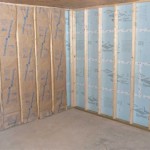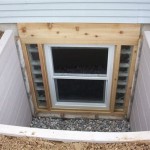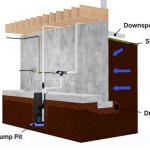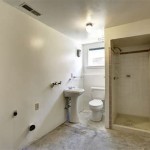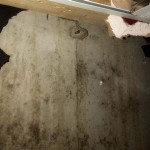Best Type of Paint For Basement Cinder Block Walls
Choosing the right paint for basement cinder block walls is a crucial step in finishing and protecting this area of a home. Cinder block, also known as concrete masonry units (CMUs), presents unique challenges due to its porous nature and susceptibility to moisture. Selecting the appropriate paint can prevent water damage, mold growth, and efflorescence, ensuring a durable and aesthetically pleasing finish. The effectiveness of the paint job hinges on understanding the characteristics of cinder block and the properties of different paint types.
Basement environments typically have higher humidity levels compared to other areas of a house. Cinder block, being porous, readily absorbs moisture from the surrounding air and the ground. This constant exposure to moisture can lead to several problems, including the breakdown of the block itself, the growth of mold and mildew, and the unsightly appearance of efflorescence, a white, powdery deposit of salt that forms on the surface. Therefore, the primary function of paint applied to cinder block walls is to act as a barrier against moisture penetration, preventing these issues from occurring. The ideal paint will not only resist water absorption but also allow the block to “breathe,” allowing trapped moisture to escape without damaging the paint film.
Before applying any paint, proper preparation of the cinder block surface is essential. This involves cleaning the walls thoroughly to remove any dirt, dust, efflorescence, or existing coatings. Any cracks or holes in the block should be filled with a concrete patching compound. Once the surface is clean and repaired, a primer is typically applied to improve adhesion and provide a uniform base for the paint. The type of primer used is as important as the paint itself, as it needs to be compatible with both the cinder block and the paint chosen for the finish coat.
Understanding Different Paint Types for Cinder Block
Several types of paint are commonly used for cinder block walls, each with its own set of advantages and disadvantages. The selection process should consider factors such as moisture resistance, durability, ease of application, and aesthetic preferences. The most common types include elastomeric paint, epoxy paint, acrylic latex paint, and masonry waterproofing paint.
Elastomeric paint is a thick, rubbery coating designed to expand and contract with the surface it covers. This flexibility makes it particularly well-suited for cinder block, as it can bridge small cracks and prevent further water penetration. Elastomeric paint provides excellent waterproofing properties and is highly resistant to mold and mildew growth. However, it is typically more expensive than other paint types and may require professional application due to its thickness and fast drying time.
Epoxy paint is a two-part system consisting of a resin and a hardener, which, when mixed, create a very durable and chemical-resistant coating. Epoxy paint forms a hard, non-porous surface that is highly resistant to abrasion and moisture. It is often used in commercial and industrial settings where durability is paramount. However, epoxy paint can be difficult to apply, requiring careful mixing and application techniques. It also tends to be less flexible than elastomeric paint and may not be suitable for walls with significant cracking or movement.
Acrylic latex paint is a more common and affordable option for painting cinder block walls. It is water-based, easy to apply, and provides good resistance to moisture and mold. Acrylic latex paint offers good adhesion to properly primed surfaces and is available in a wide range of colors and finishes. While not as waterproof as elastomeric or epoxy paint, high-quality acrylic latex paints formulated for masonry applications can provide adequate protection for basement walls, especially when used in conjunction with a suitable primer.
Masonry waterproofing paint is specifically designed to seal and protect porous masonry surfaces. These paints typically contain a high concentration of solids and are formulated to penetrate deep into the pores of the cinder block, creating a waterproof barrier. Masonry waterproofing paints are often epoxy-based or acrylic-based and are available in a variety of formulations to address different moisture conditions. Some formulations are also designed to resist efflorescence.
Key Considerations for Choosing the Right Paint
The optimal choice of paint depends on several factors specific to the basement environment and the condition of the cinder block walls. Assessing the level of moisture exposure, the presence of existing damage, and the desired aesthetic appearance is crucial for making an informed decision. It is essential to consider the climate, the surrounding soil conditions, and the overall construction of the building.
The level of moisture exposure is a primary consideration. If the basement experiences frequent water intrusion or has consistently high humidity levels, a more robust waterproofing solution, such as elastomeric or epoxy paint, may be necessary. For basements with moderate moisture levels, a high-quality acrylic latex paint formulated for masonry applications may suffice. A moisture meter can be used to assess the moisture content of the cinder block walls to determine the extent of the problem.
The presence of existing damage, such as cracks, holes, or efflorescence, will also influence the choice of paint. Before applying any paint, these issues need to be addressed with appropriate patching and cleaning. Elastomeric paint is particularly effective at bridging small cracks, while epoxy or masonry waterproofing paint can provide a more durable barrier against water intrusion in areas with significant damage. Addressing the underlying causes of the damage, such as poor drainage or foundation issues, is also essential for long-term success.
Aesthetic preferences also play a role in the paint selection process. Acrylic latex paint offers the widest range of colors and finishes, allowing for greater flexibility in achieving the desired look. Elastomeric and epoxy paints are typically available in a more limited selection of colors, but they can be tinted to match specific color schemes. The choice of finish, such as flat, satin, or semi-gloss, will also affect the appearance of the walls and their ability to resist dirt and stains. A glossier finish is generally easier to clean but may also highlight imperfections in the surface.
Application Techniques and Best Practices
Regardless of the paint type chosen, proper application techniques are essential for achieving a durable and effective finish. Following the manufacturer's instructions carefully and paying attention to detail will significantly improve the outcome of the paint job. Surface preparation, primer selection, and application methods all contribute to the overall success.
Surface preparation is the foundation of any successful paint job. The cinder block walls should be thoroughly cleaned to remove any dirt, dust, efflorescence, or existing coatings. A wire brush or a pressure washer can be used to remove loose debris and stubborn stains. Any cracks or holes in the block should be filled with a concrete patching compound and allowed to dry completely before proceeding. If efflorescence is present, it should be neutralized with a solution of muriatic acid and water, following the manufacturer's instructions carefully and taking appropriate safety precautions.
Primer selection is crucial for ensuring proper adhesion and creating a uniform base for the paint. A masonry primer specifically designed for cinder block is recommended. These primers are formulated to penetrate the porous surface and provide a strong bond for the paint. The primer should be applied in accordance with the manufacturer's instructions, typically using a brush, roller, or sprayer. Allow the primer to dry completely before applying the paint. Using a tinted primer that is close to the final paint color can also improve coverage and reduce the number of coats required.
Application methods vary depending on the type of paint and the desired finish. Elastomeric paint is typically applied with a thick-nap roller or a sprayer due to its viscosity. Epoxy paint may require specialized equipment and application techniques. Acrylic latex paint can be applied with a brush, roller, or sprayer, depending on the size of the area and the desired finish. Multiple thin coats are generally preferable to a single thick coat, as this promotes better adhesion and reduces the risk of drips and runs. Allow each coat to dry completely before applying the next one. Maintaining consistent temperature and humidity levels during application can also improve the quality of the finish.

Painting Cinder Block Walls In A Basement Or Re Paint Them

Painting Cinder Block Walls In A Basement Or Re Paint Them

6 Best Paints For Concrete Basement Walls

Painting Cinder Block Walls In A Basement Or Re Paint Them

Painting Cinder Block Walls In A Basement Or Re Paint Them

6 Best Paints For Concrete Basement Walls

Painting Cinder Block Walls In A Basement Or Re Paint Them
Best Basement Wall Paint On 100 Year Old Cinderblocks Diy Home Improvement Forum

Painting Cinder Block Walls In A Basement Or Re Paint Them

Best Paint For Concrete Walls In A Basement
Related Posts

